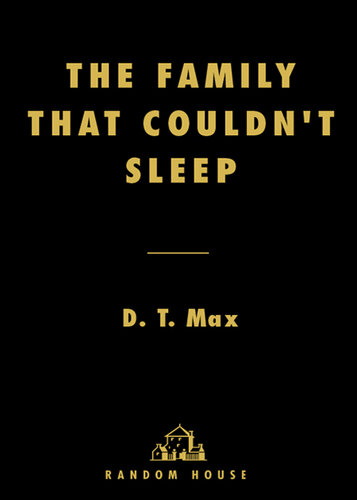
The Family That Couldn't Sleep
A Medical Mystery
یک راز پزشکی
کتاب های مرتبط
- اطلاعات
- نقد و بررسی
- دیدگاه کاربران
نقد و بررسی

January 29, 2007
An engaging nonfiction "medical mystery" starts with the strange case of an Italian family whose members, upon reaching a certain age, succumb to a sort of sleeping disorder that causes not only insomnia but certain death. The cause of this disease is determined to be prions—infectious agents derived from proteins, not viruses—so Max explores other prion diseases, such as mad cow disease and kuru, and delves into the history of prion research as a way of unraveling the mysteries behind the disease that's been plaguing the titular family for generations. Gardner lets the material do most of the heavy lifting by narrating in a plain, unadorned style that keeps his own contributions to the narrative minimal, the auditory equivalent of transparent prose. The pacing and fascinating subject matter keep the listener fully engaged throughout, resulting in an audiobook that will certainly be no cure for insomnia. In fact, it might even warrant an advisory warning: side effects may include sleepless nights, caused by a strong desire to get to the next chapter. Simultaneous release with the Random House hardcover (Reviews, July 31).

July 31, 2006
In 1765, Venetian doctors were stumped by the death of a man who had suffered from insomnia for more than a year and spent his final months paralyzed by exhaustion. Over the next two centuries, many of his descendants would develop similarly fatal symptoms, with a range of misdiagnoses, from encephalitis to alcohol withdrawal. Finally, in the early 1990s, their disease was recognized as a rare genetic form of prion disease. The family reluctantly shared their history with Max, who has written about science and literature for the New York Times Magazine
and other publications. Max (inspired in part by his own neuromuscular disorder) has crafted a powerfully empathetic account of their efforts to make sense of their suffering and find a cure. But this is only half the story. Looking at prion disease in general, Max doubles back to the English mad-cow epidemic of the 1990s, retracing established backstories among New Guinea aboriginals and European sheep herds. There's enough fascinating material—in particular, a theory suggesting that early humans were nearly wiped out by a plague spread by cannibalism—to keep readers engaged, but they're likely to want still more about the genuinely captivating family drama.

September 1, 2006
Just when you thought you were familiar with most of the really unusual medical ailments, along comes fatal familial insomnia (FFI), which has afflicted one Italian family for two centuries. The disease strikes in middle age. Symptoms include profuse sweating, constipation, impotence, and sudden onset of menopause. Eventually the body, deprived of sleep, begins to shut down. Fifteen months after the first symptoms appear, the patient dies. The brutal thing about FFI is that, while a lot is known about its effects, very little is known about its cause or its treatment (if there is a treatment). The book is like a nonfiction version of a Michael Crichton novel: an enigmatic illness, a family in jeopardy, a race against the clock to find a cure. Max, a science journalist, uses FFI as a springboard to tell a broader story about the history of fatal diseases for which cures are desperately needed, such as Parkinson's and mad cow. It would be a mistake to call this book "entertaining"--it's too unsettling and scary for that--but it's certainly very timely and compellingly written.(Reprinted with permission of Booklist, copyright 2006, American Library Association.)

























دیدگاه کاربران